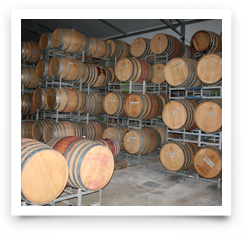 We get many questions about cellaring wines. Let’s face it, we would all love to drag our mates downstairs into the cellar, light the candles, and sweeping through the cobwebs pull up in front of the row of dusty boxes of sixties Grange, eighties Bordeaux, and off to the side a neat collection of specialty wines – Sauterne, Vintage Port, and deluxe Champagne.
We get many questions about cellaring wines. Let’s face it, we would all love to drag our mates downstairs into the cellar, light the candles, and sweeping through the cobwebs pull up in front of the row of dusty boxes of sixties Grange, eighties Bordeaux, and off to the side a neat collection of specialty wines – Sauterne, Vintage Port, and deluxe Champagne.
However, apart from not having an underground cellar, most of us were either too young or too silly to be drinking Grange when it cost less than $5 a bottle. So what to do? Firstly, do you like the taste of older wines? They certainly change as they age, and nothing is worse than a wine that was great then, but isn’t now. Most reds we drink now days are only 2 or 3 years old, and the winemakers have made them with this in mind. So you need to select wines that will age and improve, but don’t keep them too long. With time they will become softer, richer, and the individual flavours will integrate to create a single seamless flavour.
How do you pick wines that will improve with bottle ageing?
 First start with great years. In South Australia try 1990, 1991, 1998, 2002. In the south west of Western Australia the great years are 1990, 1994, 1995, 1998, 1999, 2001, 2003. In the Swan Valley we rarely have an off year – but 2001 and 2005 stand out. The other years will always contain some gems, and it’s not to say the wines are of lesser quality, but as a generalisation they will age more quickly.
First start with great years. In South Australia try 1990, 1991, 1998, 2002. In the south west of Western Australia the great years are 1990, 1994, 1995, 1998, 1999, 2001, 2003. In the Swan Valley we rarely have an off year – but 2001 and 2005 stand out. The other years will always contain some gems, and it’s not to say the wines are of lesser quality, but as a generalisation they will age more quickly.
Second, the wines must be good to begin with – rich in fruit, balanced, good length of flavour. Whites with low phenolics and high acids like riesling, Swan Valley verdelho, and Hunter semillon age best. Reds with excellent fruit midpalate and solid but not over extracted or astringent tannins age best. Be careful of wine show results – they don’t take ageability into account, but only judge the wine on the day. Wines made with excellent ageing ability such as our Reserve Shiraz often lose points because of this (that’s why we get lots of silver medals – “…it’s really great, but just a bit firm on the finish at this point…”).
Third, pick wines with a track record of ageing – either the label or producer, or that variety from that region. Often this is why the old established labels are safe bets – we know their history. We believe our Reserve Shiraz will age for a long time – 10-20 years – because of the flavour and tannin structure and the general track record of quality Swan Valley reds, which display remarkable longevity.
How long is too long – only one way to find out – start with 6 or 12 bottles, leave them be for three or four years and then drink one every year or two until they are perfect – a six pack should last  about 8 to 10 years on this basis! But of course you have to have a decent stash to be able hold off that long!
about 8 to 10 years on this basis! But of course you have to have a decent stash to be able hold off that long!
And lastly, try and keep your wine somewhere cool with a stable temperature. Even if it gets a bit warmer than recommended (150C is perfect) your wines won’t go “off”, they will just age a little quicker.
